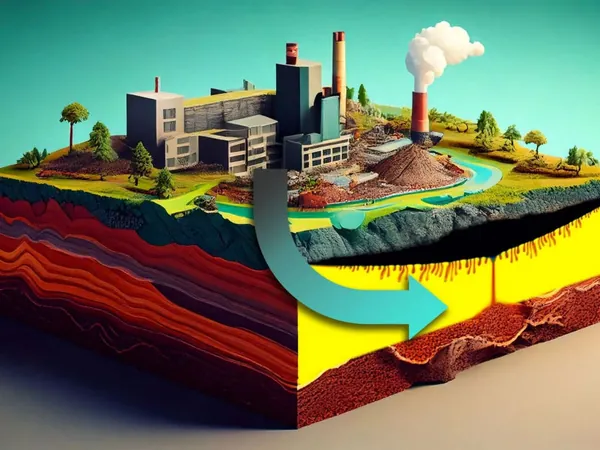
Burying Carbon Dioxide: The Groundbreaking Science Behind Permanent Storage
2025-04-09
Author: Daniel
The Surprising Behavior of CO2 in Water
One might naturally assume that carbon dioxide, being lighter than water, would rise to the surface when injected into groundwater. However, the reality is much more complex. Marco De Paoli, leading the research at the University of Twente in the Netherlands and the Institute of Fluid Mechanics and Heat Transfer at TU Wien, clarifies this phenomenon. “While pure CO2 is indeed less dense than water, the scenario changes dramatically when CO2 dissolves in water. This mixture leads to a decrease in volume, creating a density-heavy liquid,” he explains.
When CO2 is dissolved in water, the resultant liquid becomes denser than water with lower CO2 concentrations. Consequently, CO2-rich water begins to sink, allowing it to be effectively stored in deeper geological formations.
The Mechanics of CO2 Storage
De Paoli emphasizes the fascinating dynamics at play in porous rock structures. Regions with the highest CO2 concentrations descend rapidly, promoting further mixing throughout the groundwater. This cascading effect results in a unique, intricate network of areas with varying CO2 levels, which can be crucial for predicting and optimizing CO2 flow underground.
These groundbreaking computer simulations have illuminated that once CO2-rich water sinks into the earth, it can remain securely trapped for an indefinite period. The findings enable engineers to develop predictive models and effective CO2 injection strategies, thereby circumventing the need for complex simulations in every scenario.
Geological Requirements for CO2 Storage
However, successfully storing CO2 isn’t as simple as it sounds; specific geological conditions must be met. First, an impermeable rock layer is essential to contain CO2 until it dissolves in water. Below this layer, a porous rock formation allows for the efficient downward movement of the CO2-laden water. Remarkably, it appears that even seismic activity or human interventions would not interfere with the secure storage of CO2 once it has settled.
“The good news is that suitable geological conditions are relatively common,” De Paoli notes. “Depleted oil reservoirs and saline aquifers, which are widespread beneath seafloors and land, are ideal candidates for CO2 storage. Notably, Austria is home to at least six saline aquifers that could facilitate this process.”
Future Directions in CO2 Research
As the ERC-funded research project unfolds, Marco De Paoli aims to delve deeper into significant questions regarding the interaction between CO2-containing water and geological formations. Understanding how rock changes when CO2 flows through it is pivotal, since chemical reactions could enhance the downward movement of CO2 by dissolving rock minerals.
“If we are to make a meaningful impact on climate change through carbon capture, we must meticulously answer these questions,” asserts De Paoli.
In summary, the quest to eliminate CO2 from the atmosphere is not just a dream; it is rapidly becoming a tangible reality. As scientists like Marco De Paoli unveil the complexities of underground carbon storage, we edge closer to a sustainable solution for our planet. The call to action has never been more pressing—are we ready to grab this opportunity to combat climate change?



 Brasil (PT)
Brasil (PT)
 Canada (EN)
Canada (EN)
 Chile (ES)
Chile (ES)
 Česko (CS)
Česko (CS)
 대한민국 (KO)
대한민국 (KO)
 España (ES)
España (ES)
 France (FR)
France (FR)
 Hong Kong (EN)
Hong Kong (EN)
 Italia (IT)
Italia (IT)
 日本 (JA)
日本 (JA)
 Magyarország (HU)
Magyarország (HU)
 Norge (NO)
Norge (NO)
 Polska (PL)
Polska (PL)
 Schweiz (DE)
Schweiz (DE)
 Singapore (EN)
Singapore (EN)
 Sverige (SV)
Sverige (SV)
 Suomi (FI)
Suomi (FI)
 Türkiye (TR)
Türkiye (TR)
 الإمارات العربية المتحدة (AR)
الإمارات العربية المتحدة (AR)